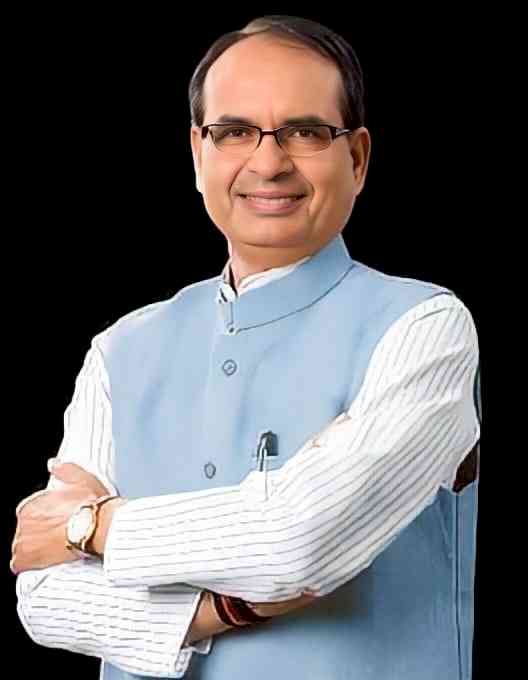Life Insurance 2024 – Exploring New Frontiers

"2023 was not just another year in the archives of the life insurance industry; it was a year of groundbreaking achievements. The industry, leveraging the power of Artificial Intelligence (AI) and other advanced technologies, transformed insurance from a complex necessity to a simple, accessible solution tailored to the diverse needs of the Indian populace.
Partly triggered by COVID, the Indian population too has become more aware of the need and urgency of buying a life insurance policy. Life insurance companies have thus been growing steadily and contributing to the Indian economy. Tech innovations fuelled this growth and will sustain it in the years to come.
Budget Wishlist
Our journey towards 'Insurance for All by 2047' is marked by strategic steps and certain recommendations for the upcoming Budget could pave the way for growth and accessibility in the Life Insurance Sector:
1. No Taxation for Annuity Plans to Benefit Both Retirees and the Industry:
Many Indians don't save enough for retirement, and the gap between needed and available retirement funds is expected to reach $85 trillion by 2050. To help close this gap, consider these steps:
Investing in pension and annuity products is crucial for income after retirement. Making taxes simpler or removing them for these products will encourage more people to invest in these important financial protections.
Pension policies, like the NPS, provide a steady income in retirement. It's important to lessen the tax load for people receiving pensions from the National Pension System (NPS), as the retirement fund gap is expected to increase a lot. The current ₹50,000 tax exemption for NPS under Section 80CCD(1B) should also apply to pension and annuity plans to encourage more people to use them.
2. Improving Tax Benefits to Increase Insurance Coverage:
India faces a severe issue with inadequate insurance. When a family's primary earner passes away, the money left for the survivors to live and settle debts is usually less than nine percent of what's actually needed[1].
• Separating Savings for Life and Health: Changing tax sections 80C and 80D to provide separate tax breaks for the life-threatening risk part of life and health insurance payments, as well as for fixed-term insurance plans, could help close the gap in death risk coverage and enhance social security.
• Complete Deduction for Life Insurance Premiums: Permitting individuals to deduct the entire amount paid for life insurance premiums from their taxable income, as stated in Section 56, without any decrease due to claims made under other sections such as 80C, will encourage more people to buy insurance. This means they get the full tax benefit for their insurance premiums, making insurance more financially appealing.
3. GST Reforms for Wider Reach: Lowering the Goods and Services Tax (GST) on term life insurance and applying a 'Zero rating' –which means setting the tax rate to 0%— for certain essential policies like the Pradhanmantri Jeevan Jyoti Bima Yojana, smaller insurance policies covering up to ₹2 lakh, and annuity products for National Pension Scheme subscribers. By effectively removing the tax without sacrificing tax benefits for businesses, this policy aims to enhance financial security for more citizens.
A Collaborative Future Ahead
As we progress, the collective efforts of the life insurance industry, including Aegon Life, are crucial in shaping a more secure financial future for individuals across the nation. With data enablement as the driving force behind this insurtech revolution, we can expect many more innovations soon. Databases such as Aadhaar, Income Tax Portal, and Account Aggregator Network is already helping insurers with digital underwriting. The Ayushman Bharat Health Account (ABHA) can also be a significant enabler for life insurance companies.
With ongoing support from regulatory bodies and anticipated policy reforms, insurers are committed to extending our reach and impact, making insurance a fundamental part of every Indian household’s financial plan. Together, we’re not just insuring lives; we’re securing futures and building a new world.”
-Satishwar B, MD & CEO, Aegon Life Insurance
“In 2023, the insurance landscape showcased resilience, adaptability, and innovation, particularly in the thriving Indian life insurance sector, which is experiencing a robust annual growth rate of 17% in Total Business Premiums. This growth is fueled by increased awareness, innovative product offerings, and customer-centric initiatives that attract policyholders.
The Indian insurance industry has shown resilience by embracing digitalization in operations and distribution, coupled with a robust adherence to risk management principles. Currently, the Indian Life Insurance industry stands as the 10th largest globally, highlighting its growing significance on the international stage. The industry is poised to achieve a USD CAGR of around 12% until 2027, reaching approximately USD 170 billion.
The life insurance industry has been requesting for a distinct tax deduction limit, specifically for life insurance, with a special emphasis on the term insurance category, apart from the existing 80C provisions. This would serve as an incentive for individuals to invest in life insurance policies and promote a sense of long-term security. There could be an opportunity to also re-look at the taxation framework surrounding Pension and Annuity Products. An extension of the current Rs 50,000 tax exemption, applicable to the National Pension Scheme under Section 80CCD(1B), to encompass pension and annuity plans offered by insurance companies, could make retirement planning more attractive and accessible, encouraging individuals to opt for insurance-based pension and annuity products. These changes would also create a more level playing field, fostering healthy competition within the industry.
Furthermore, IRDAI's vision of "Insurance for All by 2047" signifies a deep commitment to revolutionize the insurance landscape. The focus is on enhancing the availability, accessibility, and affordability of insurance services for both citizens and businesses, marking a transformative era for the sector. A noteworthy stride in promoting innovation is the regulatory sandbox, providing companies with the opportunity to launch products in safe environment before a full-fledged launch. Working hand-in-hand with the regulator, the sandbox is paving way for a more agile and dynamic approach. Further, the impending launch of BIMA SUGAM in 2024 represents a pivotal step in modernizing the insurance industry.
From our perspective, we anticipate a year of ongoing change in insurance sector, characterized by technological advancements, enhanced focus on customer experiences and an increasing emphasis on environmental and social responsibility.
Looking at the economy more holistically, the enduring commitment to the 'Make In India' initiative of the government will help increase capital expenditure and also help improve long-term productivity. Capex as a part of total spending has risen from 12% in FY20 to 22% in FY24. With private capex recovery still in the incipient stage, the government is likely to persist in its focus on capex. We are expecting a year-on-year growth of 20-25% in FY25. The government is also giving due cognizance to fiscal consolidation, aiming for a fiscal deficit target of 4.5% in FY26. Following strong electoral wins in the recent state assembly elections, the focus is likely to be on continuing the path of fiscal consolidation and reducing the deficit to 5.2% of GDP in FY25. Given the robust 10.5% nominal GDP growth and a disciplined fiscal deficit standing at 5.2%, our internal projections indicate a Gross Government Securities (G-Sec) supply of approx Rs 15.5 lakh Cr in FY25, similar to the supply observed in FY24. Furthermore, the expected influx of around USD 25 billion (~Rs 2 lakh Cr) from passive global funds, stemming from India's inclusion in the Global Bond Index of JP Morgan, is likely to influence interest rates to decrease in the upcoming fiscal year.
Even though the upcoming budget is a Vote on Account and not a full-fledged budget, we foresee a continuation of the infra capex and self-dependency themes.”
-Pankaj Gupta, MD & CEO, Pramerica Life Insurance


 City Air News
City Air News 









